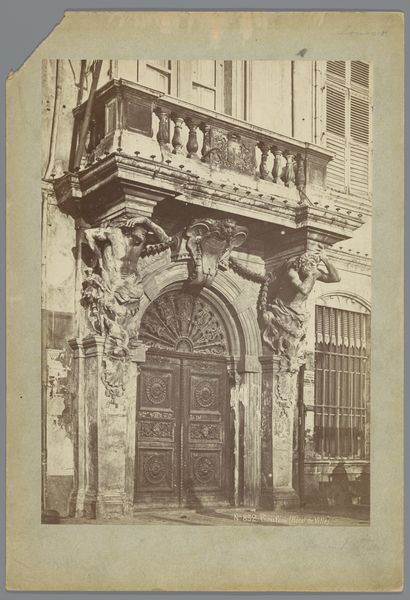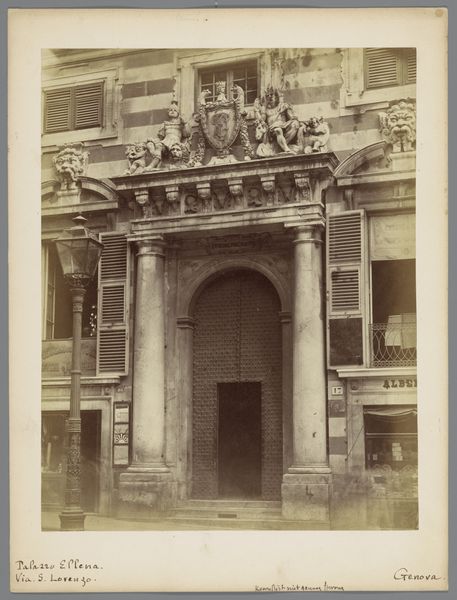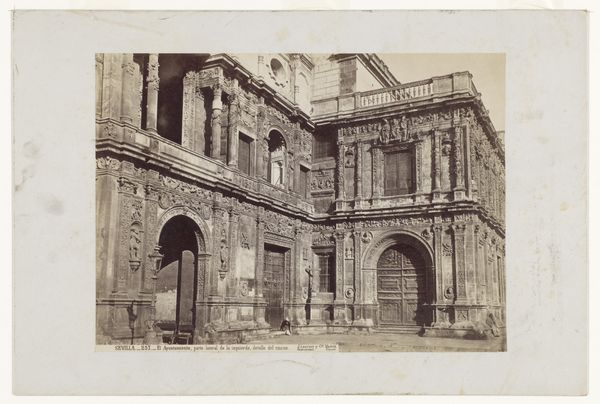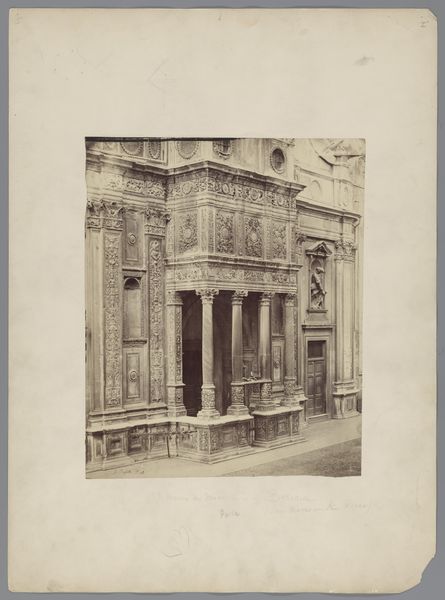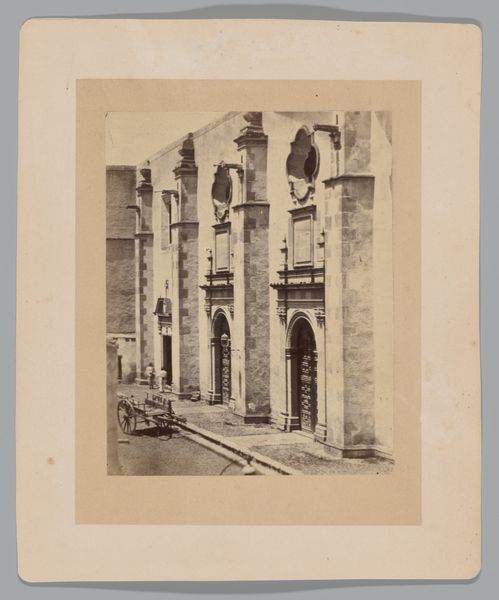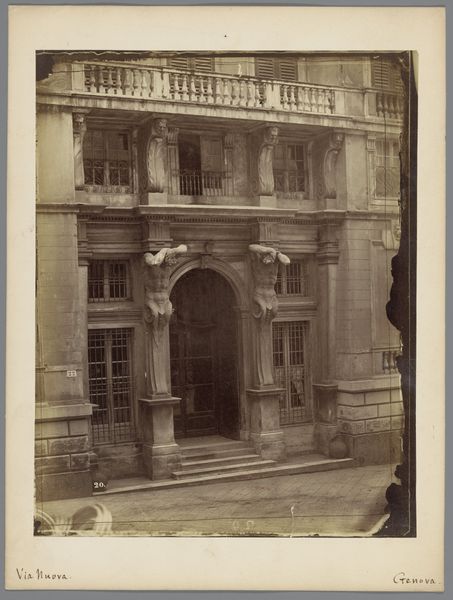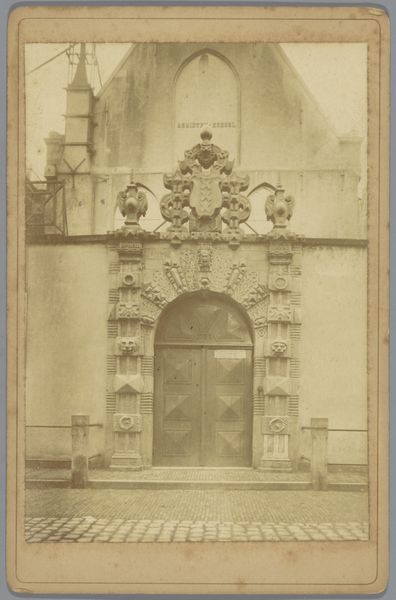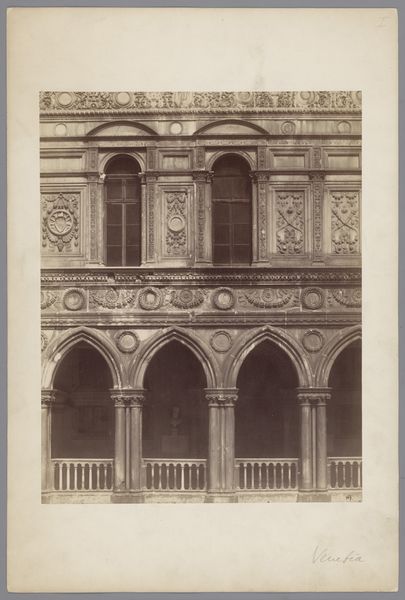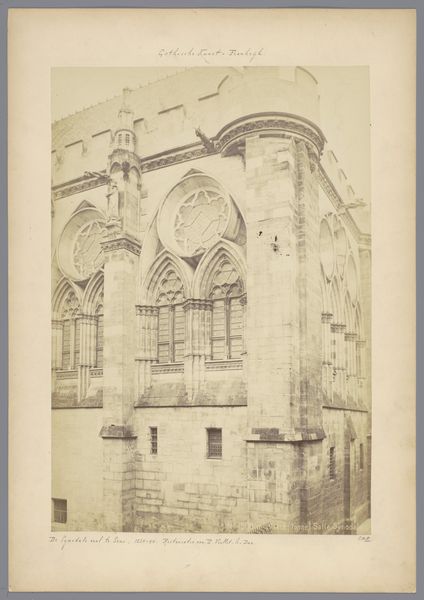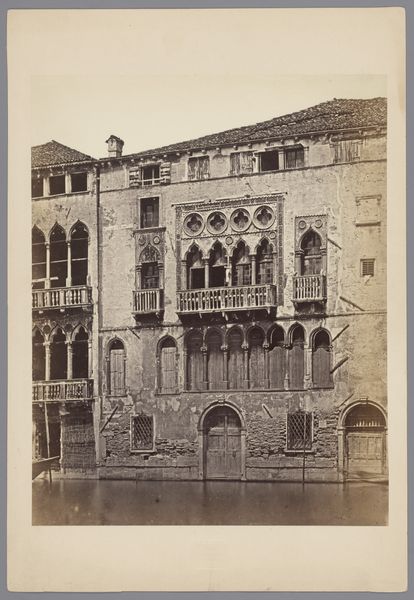
Exterieur van het trappenhuis van het kasteel van Azay-le-Rideau c. 1875 - 1900
0:00
0:00
photography, architecture
#
landscape
#
photography
#
architecture
#
statue
#
building
Dimensions: height 353 mm, width 251 mm
Copyright: Rijks Museum: Open Domain
Editor: Here we have Médéric Mieusement’s photograph, "Exterior of the Staircase of the Château d'Azay-le-Rideau," dating from around 1875 to 1900. The composition, mostly shades of grey, strikes me as formally documenting the French Renaissance architecture. What kind of historical weight does a photograph like this carry? Curator: This image, beyond a mere record, functions as a statement about French national identity in the late 19th century. Consider the historical context. The Château, a symbol of royal patronage, was now open to public viewing after periods of radical transformation in France. Photography itself became a tool to democratize art. How does it participate in crafting this architectural narrative for a wide audience? Editor: So, it’s more than just a snapshot of a building? The building representing something beyond just the place? Curator: Precisely! Think about the choices Mieusement made. The frontal view, the lack of people…it almost monumentalizes the past. The choice of subject highlights France's rich cultural heritage. Now, how does this photograph function within the broader context of other photographs of French monuments being disseminated at the time? Editor: That’s interesting. This château then becomes a political symbol, too. Mieusement captured it for people to see and study from afar… Curator: Absolutely. Photography, like this image, helps cement particular understandings and memories, consciously shaping a collective public memory of French history and greatness through its architectural symbols. And remember that institutions like the Rijksmuseum acquired works like this, signaling an explicit valuation of history. What's your takeaway now? Editor: I had only looked at the building, but there is much more complexity here that connects to its broader political role at that time and afterwards. The photograph serves as a tool. Curator: Indeed, and it continues to do so for us, even today.
Comments
No comments
Be the first to comment and join the conversation on the ultimate creative platform.

